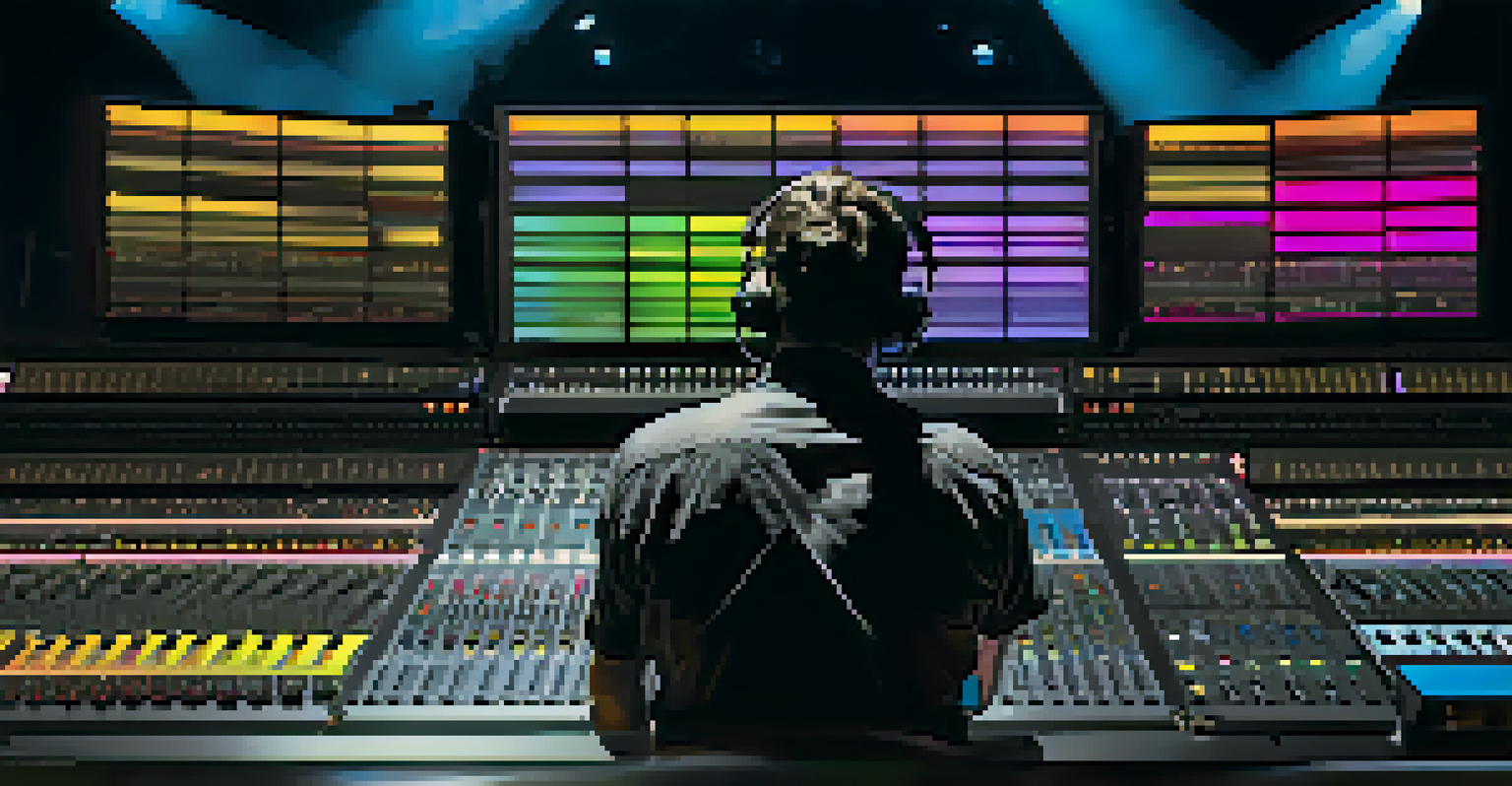The Role of Monitors in Live Guitar Sound: A Detailed Guide

What Are Monitors and Why Are They Important?
Monitors are speakers used on stage to help musicians hear themselves and each other clearly during a performance. They play a crucial role in ensuring that every note played and every nuance of the performance is captured accurately. Without monitors, musicians might struggle to stay in tune or time, leading to a less polished performance.
If you can't hear yourself, you can't perform your best.
Think of monitors as the musicians' personal sound systems that deliver live audio directly to them. This direct feedback allows performers to adjust their playing dynamically, ensuring they sound their best. In essence, monitors create an auditory environment where artists can thrive, making them an essential part of any live setup.
In the world of live music, clarity is key. Good monitors can mean the difference between a seamless performance and a frustrating experience where musicians feel disconnected from the music.
Types of Monitors Used in Live Performance
There are generally two types of monitors used in live settings: floor monitors and in-ear monitors (IEMs). Floor monitors are traditional speakers placed on the stage floor, directing sound upward towards the performers. They are commonly used in rock concerts and other genres where bands want a shared auditory experience.

In contrast, in-ear monitors provide a more personalized listening experience by delivering sound directly into the musicians' ears. This setup not only helps with clarity but also protects performers from the loud ambient noise typical of live environments. Artists can customize their mix, allowing them to hear exactly what they need to perform optimally.
Monitors Are Essential for Musicians
Monitors provide musicians with crucial sound feedback, helping them perform in tune and in sync during live performances.
Each type of monitor serves its purpose, and the choice often depends on the venue, the style of music, and the personal preferences of the musicians. Understanding these differences can help in selecting the right setup for any performance.
How Monitors Affect Sound Quality on Stage
The relationship between monitors and sound quality is significant. Monitors can enhance the overall sound experience by allowing musicians to hear themselves and their bandmates more clearly. This clarity helps them stay in sync, especially during complex arrangements where timing is crucial.
Good sound is the foundation of a good performance.
For instance, if a guitarist plays a solo without proper monitor support, they may not hear the accompanying instruments well, leading to a performance that lacks cohesion. Good monitor placement and quality can prevent these issues, ensuring that every part of the music blends harmoniously.
Moreover, the quality of the monitors themselves can dramatically affect the sound. High-quality monitors provide a more accurate representation of the sound, which can elevate a live performance to new heights.
Positioning Monitors for Optimal Sound
The placement of monitors on stage is vital for achieving the best sound quality. Typically, monitors are positioned at angles that allow sound to reach the musicians directly without overwhelming them. This strategic placement minimizes feedback and maximizes the clarity of the sound.
Consider the scenario where a monitor is too close to a microphone; this can create a feedback loop, resulting in an unpleasant screeching noise. Proper positioning helps avoid such issues and ensures that performers can hear their instruments without distraction.
Types of Monitors Enhance Experience
Different types of monitors, like floor monitors and in-ear monitors, cater to the varying needs of musicians based on the performance environment.
Ultimately, the goal is to create a balanced sound environment on stage, where each musician can hear their part as well as the entire ensemble. This balance is crucial for delivering an engaging live performance.
The Role of Sound Engineers in Monitor Setup
Sound engineers play a pivotal role in the setup and management of monitors during live performances. They are responsible for adjusting levels, EQ, and mixes to ensure that each performer hears exactly what they need. This requires not only technical skill but also a keen understanding of the musicians' preferences.
For example, a guitarist might prefer a bit more of the drums in their monitor mix, while a singer may want to hear more of the backing vocals. The sound engineer must balance these requests while maintaining the overall sound quality of the performance.
Their expertise can make or break a live show, as a well-mixed monitor setup can lead to a tighter, more engaging performance. Collaboration between musicians and sound engineers is essential for achieving the best possible results.
Common Challenges with Live Monitors
Despite their importance, live monitors can present several challenges during performances. Feedback is one of the most common issues, often caused by improper positioning or levels that are too high. Musicians may find themselves battling unwanted noise, which can distract them from their performance.
Another challenge is the varying acoustics of different venues. A monitor setup that works perfectly in one location might not translate well to another due to differences in space and sound absorption. This variability requires sound engineers to be adaptable and quick-thinking.
Proper Setup Minimizes Performance Issues
Effective positioning and management of monitors by sound engineers are vital for ensuring clear sound and preventing common challenges like feedback.
Additionally, in larger venues, it can be difficult for musicians to hear their monitors over the ambient noise. This is where in-ear monitors can shine, providing a direct audio feed that bypasses the chaotic sound environment of a live show.
Best Practices for Using Monitors Effectively
To maximize the effectiveness of monitors, musicians should communicate clearly with their sound engineers before and during the performance. Discussing specific needs and preferences can help engineers tailor the monitor mix for each individual. This proactive approach sets the stage for a successful performance.
It's also beneficial for musicians to familiarize themselves with the monitor equipment used in their setup. Understanding how to adjust levels or request changes can empower them to take control of their sound on stage.

Lastly, regular sound checks are essential. These allow musicians to hear their monitor mix in a controlled environment, making any necessary adjustments before the actual performance begins. By following these best practices, musicians can ensure they are well-equipped to deliver an outstanding live show.